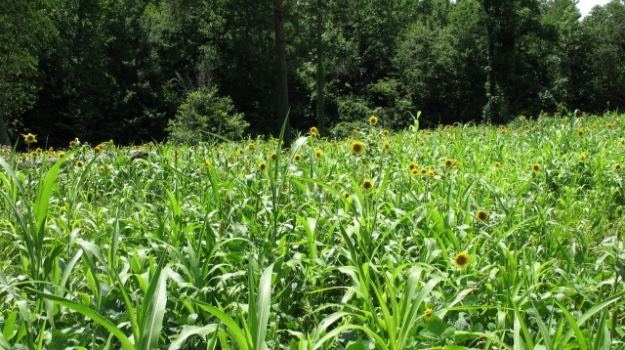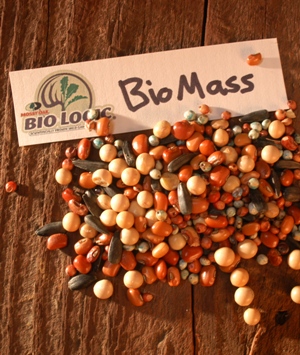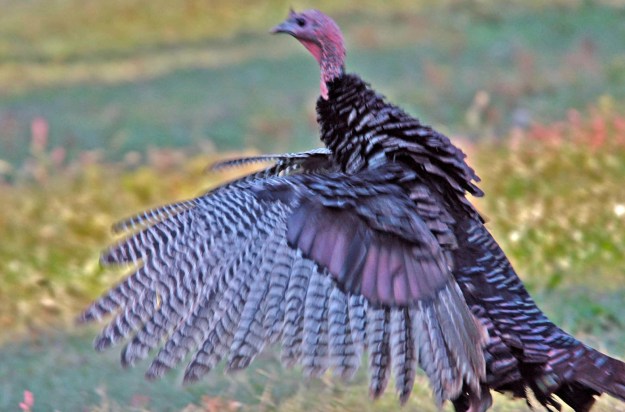
When deer hunting season is over and the camo is put away, another issue is in the forefront of a deer manager’s mind. Now comes to the time to grow plots that will provide the herd with the best food possible in order for them to obtain optimal health.
Although supplemental forages are not the only factor when it comes to deer management (habitat management, population control, food plot establishment, etc., must also be in place); but summer food plots are a truly important part of an overall management program; not to mention, the most cost effective method of ensuring adequate nutrition all year long.
When looking into the near future, making sure the resident deer population is able to get the nutrition they need that’s high in protein is a must. The warm summer months are when these beauties need to forage. This is the time when the pregnant doe is looking to feed the next generation, and the proud buck with the velvet-covered antlers is looking for that high-quality forage to make both antlers and body reach their full potential.
All the facts are there: Wildlife biologists have proven that warm-weather food plots are a necessary means in producing healthier and larger deer. The formula is simple: By planting the crops you’re able to guarantee that an ample food supply is there at a time when does are producing milk, fawns are growing and antler development is occurring. And although traditional food plot locations can be used for warm-weather sites, there are some differences that should definitely be taken into account.
When it comes to supplemental food plots, size and shape vary (although one-half to three acres is an adequate approximation). Deer have a tendency to feed along the edges of plots more than they do in the center, so planting several small plots becomes far more effective than creating one single large plot for their needs.
It is also important to note the desired shape of a plot. When it comes to the large-scale effort, having a shape that is longer and more narrow is a huge benefit, allowing the deer to maximize the long edges that are available. When it comes to width, plots must be wide enough in order to prevent the negative impacts of overcrowding and excess shading. The deer manager is looking for a wealth of food for the herd; therefore, planting one or two acres in the middle of a thousand is definitely not the way to go. A beneficial system is to plant from 1 to 3 percent of the total habitat in supplemental forage, with the plots distributed approximately one per 160 acres.
The right acreage is highly important, effectively eliminating over-browsing so that all deer can benefit. The number one cause for a spring/summer plot failure comes from too many deer feeding on immature plants, which means it’s highly necessary for the manager to protect warm season crops so they’re not over-browsed when the plants are still young.
The wealth of forage must produce the highest protein possible, and the ability to compete with native vegetation is a key factor in having the crops thrive. A combination of forage varieties will truly provide the best nutrition for deer. Usually planted between the beginning of May and mid-June, the warm season forages will grow fast if all factors from soil temperature to planting depths and seeding rates are fully understood.
 A product line that is high in popularity when it comes to providing the best forages that produce the most protein come from Mossy Oak’s Plant Biologic. BioMass spring/summer planting consists of Iron Clay cow peas, soybeans, high gear milo, sorghum and the giant Peredovik Sunflower, which is an A-one combo providing pure and utter nutrition that will attract deer and keep them there. The feed is easily digestible and very high in protein. Easy to grow, BioMass is recommended for food plots of one acre or more. And not only does it provide the best nutrition for a healthy deer herd, but also benefits wild turkeys and upland birds.
A product line that is high in popularity when it comes to providing the best forages that produce the most protein come from Mossy Oak’s Plant Biologic. BioMass spring/summer planting consists of Iron Clay cow peas, soybeans, high gear milo, sorghum and the giant Peredovik Sunflower, which is an A-one combo providing pure and utter nutrition that will attract deer and keep them there. The feed is easily digestible and very high in protein. Easy to grow, BioMass is recommended for food plots of one acre or more. And not only does it provide the best nutrition for a healthy deer herd, but also benefits wild turkeys and upland birds.
Another favorite is the BioMass All Legume blend, which is 100% legume planting for your property. LabLab is also a product managers recommend, providing a variety of vigorous, twining legume specially formulated for outstanding performance. Resilient, this product produces an incredible amount of forage and is an excellent source of protein and phosphorus for antler growth and development.
Providing high protein food sources for your deer herd during May through September is essential to increase antler growth, body weights and allowing the next generation a great head-start!
To provide the wildlife on your land the very best in wildlife forages, visit plantbiologic.com. We understand why you land and critters are important to you and you can trust Biologic to provide the highest quality, scientifically proven wildlife products available.






























